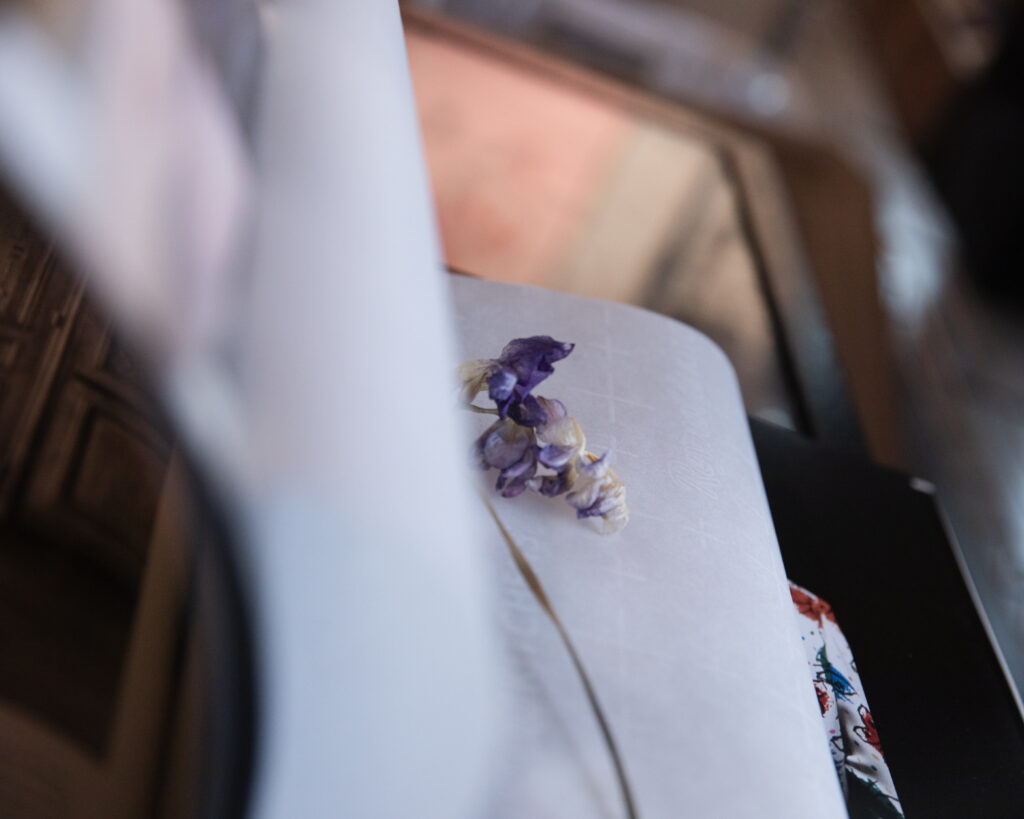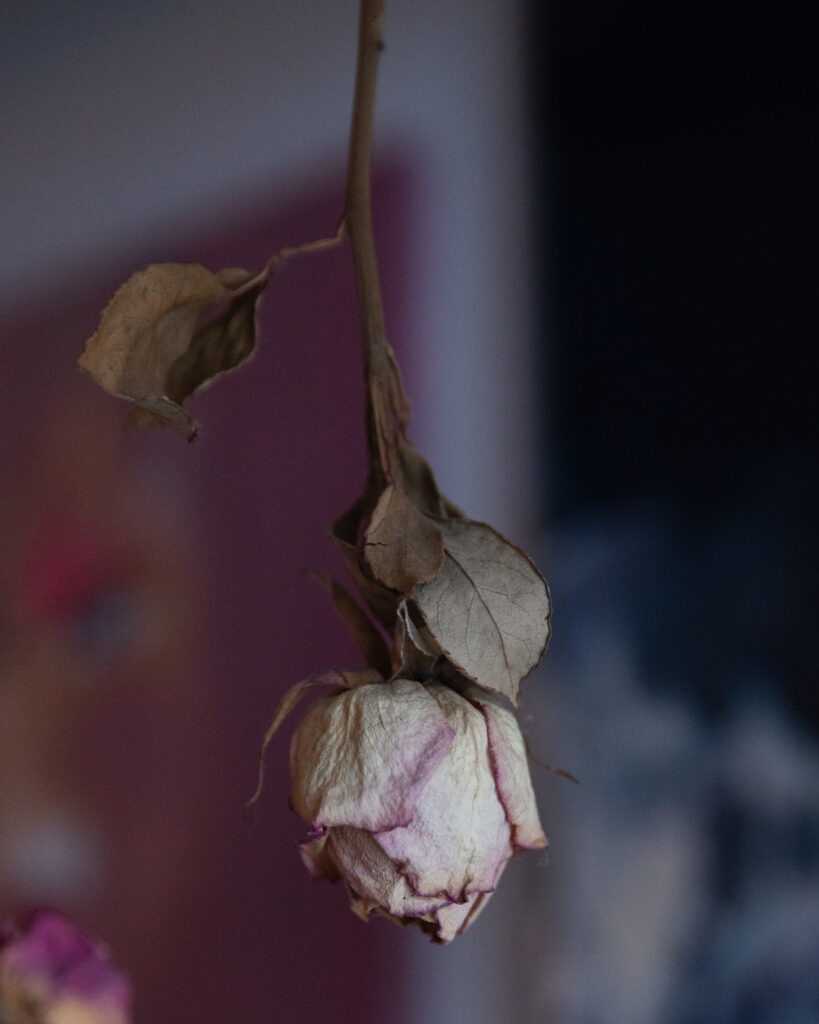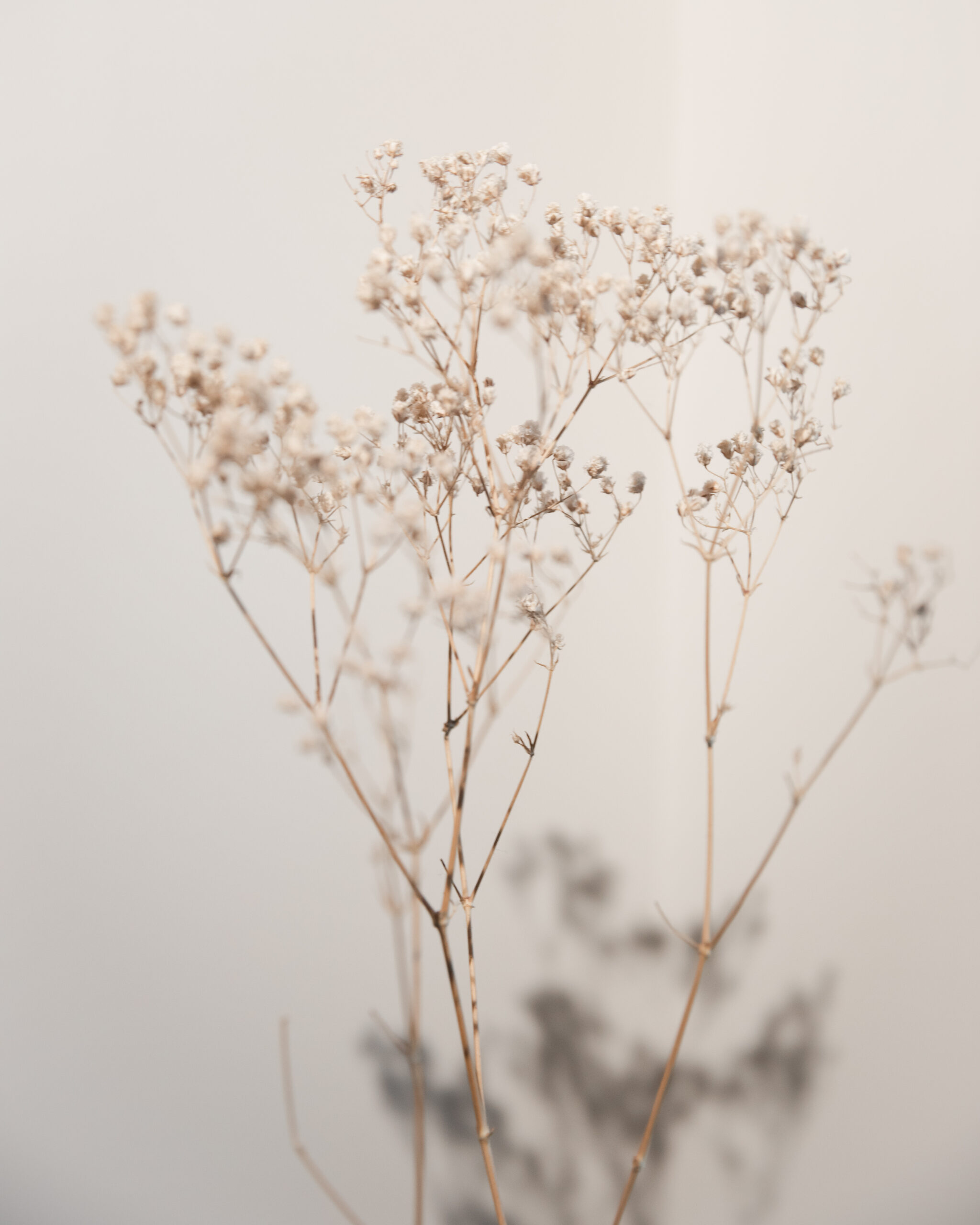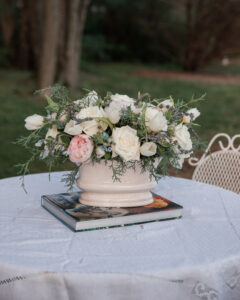
DRIED FLOWERS?
Dried flowers are a beautiful way to preserve sweet sentiments and enhance a bedside table. Beware: There is a moment of “too late” when it comes to drying cut blooms that have been sitting in water. Moisture keeps the flowers in a state susceptible to mold, rotting, drooping, deteriorating, etc. once they’ve been cut (i.e. ‘cut flowers’) from their original source. Working with healthy flowers that have opened is ideal, without waiting too long for them to decline in health and appearance. Whether you’d like to preserve a bouquet or a single stem, some tips and tricks remain the same.

PRESERVATION TIPS
There are several ways to dry flowers: hanging, laying down flat, pressed between books, in silica gel beads, or even pressed in the microwave (hello Pinterest!). Once you’ve decided how you’re going to preserve them, follow the next steps according to your choice. Take them out of water and pat the stems dry. It’s best to not wait until the blooms are fully mature because they start to deteriorate on their own at this stage and petals are likely to fall off. Trim the base of the stem to the desired length and remove any unwanted foliage. Dry away from any sunlight/windows as the sunlight can make the color fade. Once the drying stage is complete, you can spray with hairspray to help preserve shape.

DRYING TIME
Each drying method comes with a different timeline to see results. Results may vary depending on flower size, type, and specific conditions of the space they’re drying in. Below are estimated ranges of drying times:
Hanging: several weeks
Laying flat: several weeks
Between books: 1-2 weeks
Silica gel: 2-7 days
Microwave: 1-2 minutes

PROS + CONS
HANGING METHOD
Pro’s: preserves full 3D shape; easy and takes little to no effort; great for full bouquets and bigger blooms
Con’s: takes longest time to dry; color loss; brittle
LAYING DOWN FLAT METHOD
Pro’s: great for resin products; preserves some fullness of shape; easy and takes little to no effort
Con’s: takes longest time to dry; color loss; brittle
SILICA GEL METHOD
Pro’s: preserves shape and color; relatively quick drying time
Con’s: takes some effort; need to purchase the silica gel beads; can be finicky if heating the silica gel beads in the microwave; frustrating if spilled (thank us later!)
BETWEEN BOOKS METHOD
Pro’s: great for pressing between glass/if flat outcome desired; fairly easy with minimal effort; great for single flowers
Con’s: can rot or not work effectively if the books aren’t heavy enough/eliminating all moisture; flowers are delicate afterward

DRIED, NOT DIE-D
Drying flowers is a wonderful way to preserve a special memory, add something sentimental and cost-effective to your home decor, or to give alongside a gift. There are so many muses for inspiration whether it be garden-esque rooms, floral installations, or crafty tricks for sprucing up your space. Flowers, whether alive or dried, are a beautiful way to elevate the space around you.
Stay tuned for a blog on floral resin products coming soon!
– Lilly Reynolds, Visual Artist







